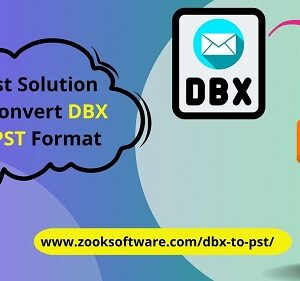In a world where every rupee counts, staying updated with the latest tax regulations is no longer a choice—it’s a necessity. With the introduction of the new tax circular, salaried individuals across the country are buzzing with questions: What’s changed? How does it affect my take-home pay? Do I need to take action?
This article is your deep dive into decoding the new tax circular and understanding its real-world impact on your monthly paycheck. We’ll break it down simply—no jargon, just clarity.
As companies work to implement these updates efficiently, tools like HR software India play a crucial role in ensuring employees receive accurate salary calculations, updated tax deductions, and timely communication about changes. With smart integration and real-time insights, modern HR tech empowers both employers and employees to stay ahead of compliance—while maximizing take-home income.
So, buckle up—we’re cutting through the noise and getting straight to the numbers that matter to you.
The Salary Slip Puzzle: Cracking the Code
Let’s face it—salary slips aren’t exactly fun to read. A maze of abbreviations, deductions, and seemingly random numbers. But hidden within those rows lies a story. A story of how much you earned, how much went to taxes, and what finally lands in your bank account.
With the new tax circular, that story has just got a plot twist.
What Is the New Tax Circular All About?
The latest circular issued by the income tax department has laid down revised guidelines for calculating tax on salary income. These updates aren’t just technical fine print—they have direct implications on how much tax is deducted from your pay and how much you get to keep.
Here’s a breakdown of the key elements of the circular:
- Clarification on Tax Regimes: The circular has emphasized how employers should seek declarations from employees about their choice of tax regime—old vs simplified.
- Default to Simplified Regime: If you don’t declare your preference, your employer will default you to the simplified tax regime, which does not allow most exemptions.
- Revised Slabs and Deductions: The updated tax slabs under the simplified regime aim to reduce tax burden for certain income groups, but remove traditional deductions.
- TDS (Tax Deducted at Source) Changes: Employers must align their monthly TDS deductions based on your declared regime, leading to differences in net salary.
Tax Regimes: Old vs Simplified – The Eternal Tug-of-War
Understanding the tax regimes is key to knowing how your salary is affected.
Old Regime (The Traditionalist’s Choice)
- Allows multiple exemptions and deductions—like HRA, LTA, standard deduction, home loan interest, etc.
- Ideal if you have multiple investments and expenses that qualify for deductions.
- More paperwork, but potentially lower tax liability if used smartly.
Simplified Regime (The Clean Slate Approach)
- Lower tax rates across income slabs.
- But, most exemptions and deductions are gone.
- Great for those who don’t invest much or don’t want the hassle of claiming deductions.
With the new circular, not choosing means being placed under the simplified regime by default. And that could shrink your take-home pay if you were depending on deductions under the old regime.
How the Circular Impacts Your Take-Home Pay
Let’s get real. What you care about most is how much hits your account every month. Here’s how the circular affects your net salary:
1. Automatic Tax Regime Selection
If you forget to declare your tax regime at the start of the financial year, your employer will automatically apply the simplified regime. This could lead to:
- Higher tax outgo if you had deductions planned under the old regime.
- Lower take-home pay than expected.
2. Revised TDS Deductions
Employers now have clearer instructions to adjust TDS deductions monthly based on your regime choice. So, your salary could vary from month to month depending on:
- Bonus payouts
- Reimbursement adjustments
- Mid-year regime switch (if allowed)
3. Planning Becomes Crucial
With automatic assumptions in place, it’s more important than ever to:
- Submit Form 10-IEA (or relevant form) if choosing a regime other than default.
- Share investment declarations early and clearly.
- Understand the long-term impact, not just monthly savings.
A Hypothetical Salary Scenario
Let’s say Riya earns ₹10,00,000 annually. She’s eligible for ₹1,50,000 under Section 80C, ₹50,000 under NPS, and ₹2,00,000 as HRA exemption.
- Under old regime, she could save over ₹1,00,000 in tax due to these deductions.
- Under simplified regime, she loses all deductions and may pay higher tax, reducing her monthly salary by ₹8,000–₹10,000.
That’s real money, silently slipping away if she doesn’t declare her regime.
Checklist for Every Salary Earner
✅ Review Your Salary Structure
Understand your CTC breakup—basic, HRA, special allowance, etc. See where deductions apply.
✅ Decide Your Tax Regime Wisely
Use a regime comparison calculator to simulate tax in both old and simplified regimes. Don’t just guess—run the numbers.
✅ Declare Your Preference Early
Inform your HR or payroll team at the start of the financial year. If your employer requires a formal form, submit it on time.
✅ Keep Proofs Handy
If you go with the old regime, ensure all proof of investments, rent agreements, or education loan payments are in order.
The Bigger Picture: Salary Isn’t Just About What’s Credited
This tax circular reminds us that financial literacy is a non-negotiable skill today. Salaries aren’t just numbers—they’re your effort, your growth, your security. Every rupee deducted silently impacts your savings, goals, and lifestyle.
By staying informed, you’re not just reacting to policies—you’re reclaiming control over your money.
Conclusion: Make the Circular Work for You
Change often feels uncomfortable. A new tax circular might seem like just another routine government update. But if you pause, decode, and adapt—it could be the very nudge you need toward smarter financial planning.
Don’t let the system make decisions for you. Choose your regime, understand your deductions, and take control of your salary narrative.
Forward-thinking businesses and individuals are already turning to experts for clarity—many relying on payroll outsourcing companies in Chennai to simplify compliance, optimize salary structures, and ensure every rupee is accounted for.
Because when you truly understand your salary, you’re not just earning—you’re building a stronger, more intentional financial future.








